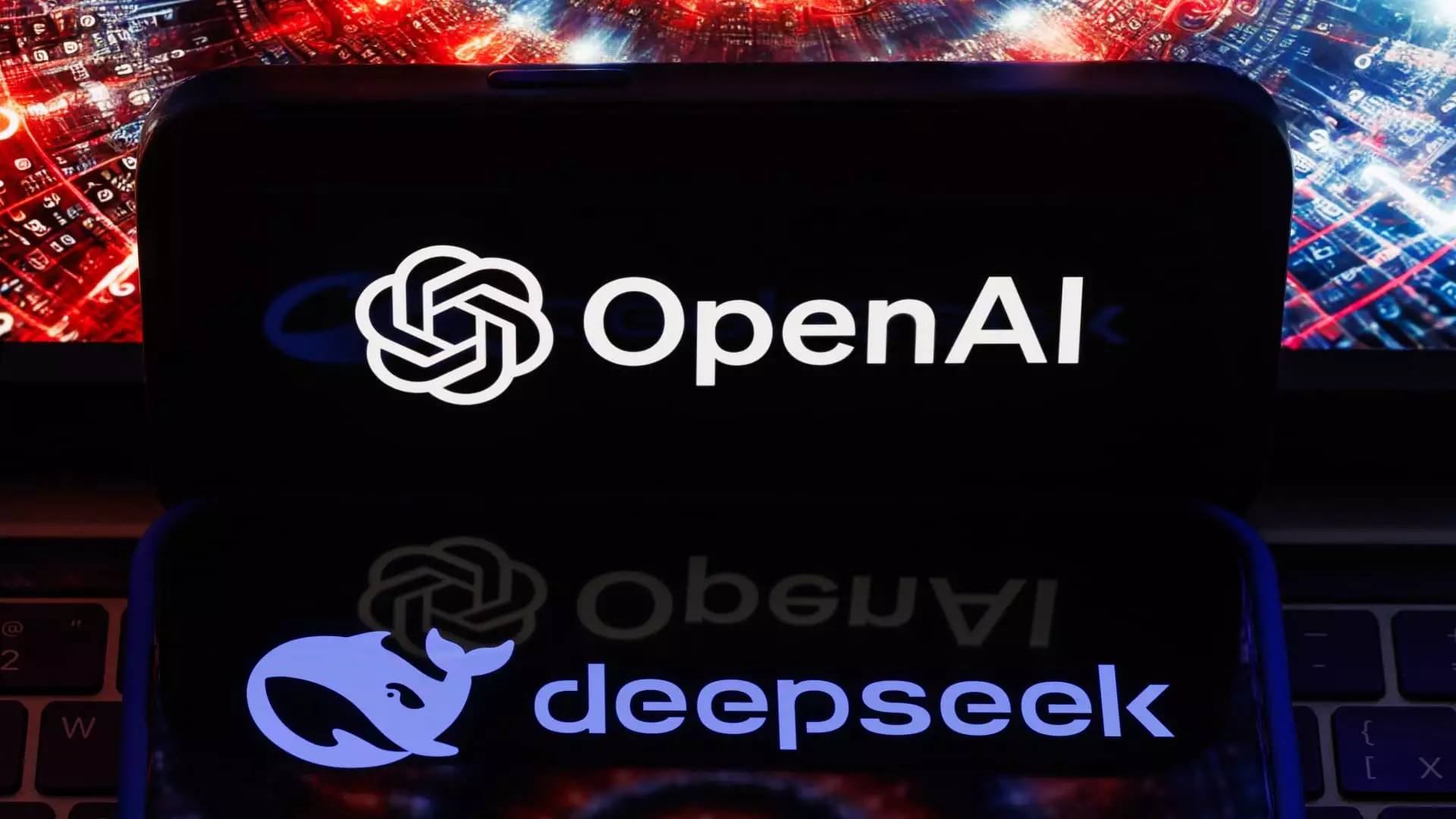As the technological landscape continues to evolve dramatically, the competition in artificial intelligence (AI) has reached unprecedented levels, particularly between the United States and China. A recent revelation from DeepSeek, a Chinese AI lab, has stirred discussions among technology executives regarding the balance of power in AI innovation. At France’s Artificial Intelligence Action Summit, industry leaders conveyed the message that China’s capabilities in AI cannot be underestimated, in light of DeepSeek’s cost-effective advancements in AI training models.
DeepSeek made headlines by releasing a technical paper that claimed its latest AI model required less than $6 million to train—an astonishingly low cost compared to the astronomical investments often reported by leading tech companies. This revelation not only astonished market watchers but also challenged the prevailing assumptions that positioned the U.S. as a frontrunner in the AI race. The CEO of OpenAI, Chris Lehane, emphasized the implications of this announcement by highlighting the clear competitive landscape developing between “democratic AI” led by the U.S. and the “authoritarian AI” spearheaded by China. This characterization raises concerns about the ethical uses of AI technology and the ideologies that underpin its development.
While the potential implications of these advancements are far-reaching, some critiques have emerged regarding DeepSeek’s model, especially its ability to handle sensitive topics. For instance, queries regarding significant historical events in China, such as the Tiananmen Square massacre, were met with evasive responses, revealing a possible agenda of censorship in its operating model. This aspect has led to broader speculation about DeepSeek’s integrity and transparency, raising questions about the underlying values driving its technological developments.
According to industry experts such as Reid Hoffman of Greylock Partners, DeepSeek’s emergence signals a shift in the competitive dynamics of AI development. The sentiments expressed during the summit indicate that the perception of China being trailing in AI capabilities is now outdated. The notion that only two nations possess the infrastructure to build AI systems at scale has garnered attention, suggesting that geopolitical barriers are no longer definitive indicators of technological advancement.
Additionally, as the conversation regarding DeepSeek’s accomplishments evolves, analysts point out that there may be more to the story than meets the eye. Reports indicate that the actual costs associated with DeepSeek’s technology may be significantly higher than publicly acknowledged, leading to skepticism about its claimed efficiency. These discrepancies highlight a larger industry concern regarding the sustainability of such innovations.
While DeepSeek showcases promising advancements, leading technology executives remain cautious about the immediate impact of these developments on major players like OpenAI and Anthropic. Meredith Whitaker, president of the Signal Foundation, argues that the current momentum remains firmly in favor of larger, more established AI models. The “bigger is better” paradigm continues to dominate, suggesting that efficiency gains alone may not be enough to disrupt existing market leaders substantially.
Furthermore, concerns over the potential “distillation” practices raise questions about the methodologies employed by DeepSeek. If the organization has indeed leveraged outputs from larger AI models to bolster its own capabilities, it reveals a strategic approach that mirrors practices observed in established companies. While innovative, this may also blur the lines of originality and raise ethical issues that the tech community must confront.
A Warning and a Call to Action
As the competition between the U.S. and China intensifies, the onus lies on Western companies to reassess their strategies in response to these emerging threats from DeepSeek. Abishur Prakash, from The Geopolitical Business, warns that the West’s understanding of China’s advancements remains limited, and complacency could lead to underestimating the capabilities and ambitions of Chinese tech firms. The implications of this scenario extend beyond mere competitive positioning; they touch upon national security and global market stability.
While DeepSeek represents a new chapter in AI development, its impact on the broader landscape remains murky. The future of AI will undoubtedly be shaped by this ongoing rivalry between the U.S. and China, necessitating a vigilant and innovative response from those invested in this rapidly evolving arena. As the race in artificial intelligence picks up speed, it is evident that strategic foresight and adaptability will be vital to navigating this complex and competitive terrain.

